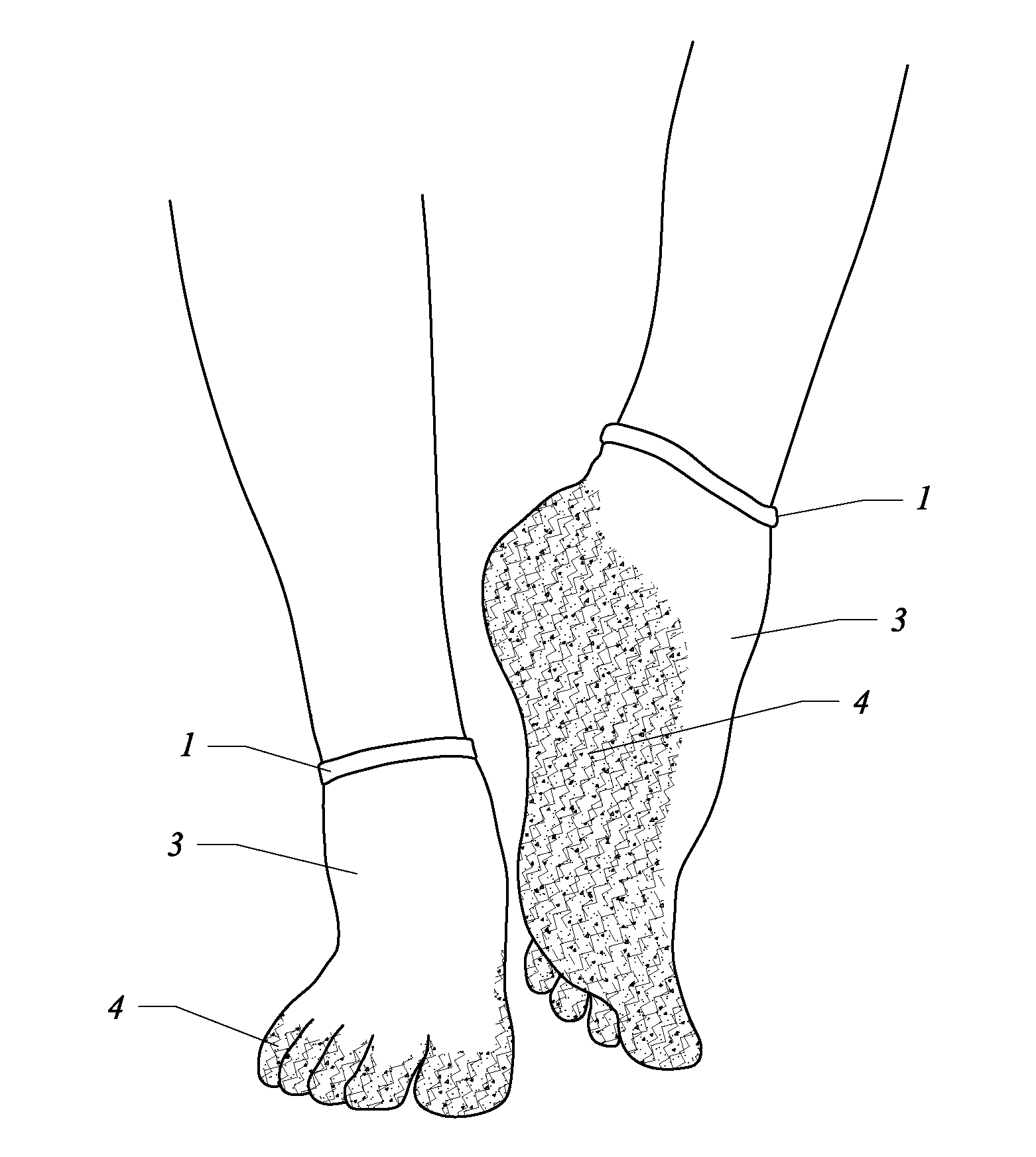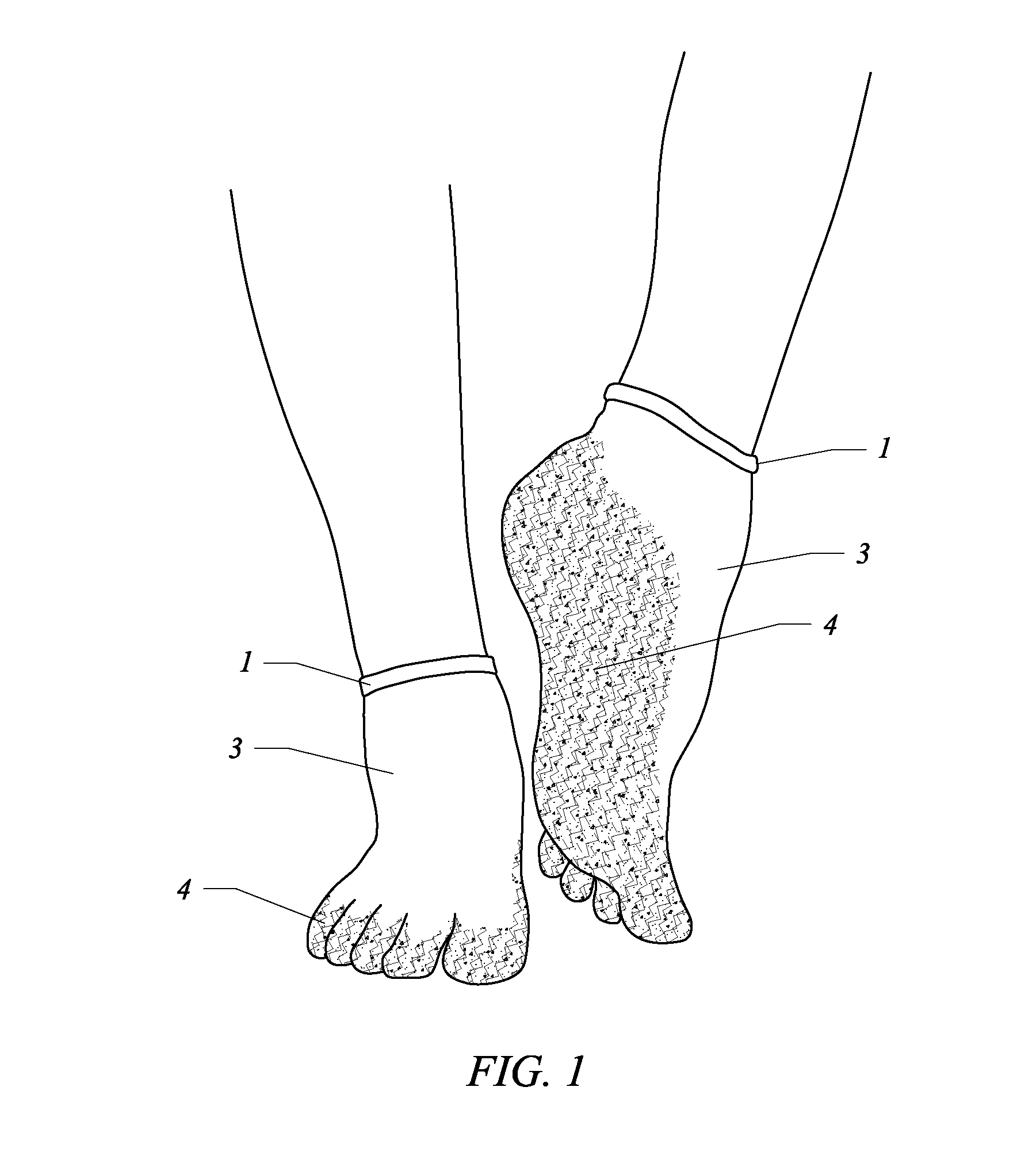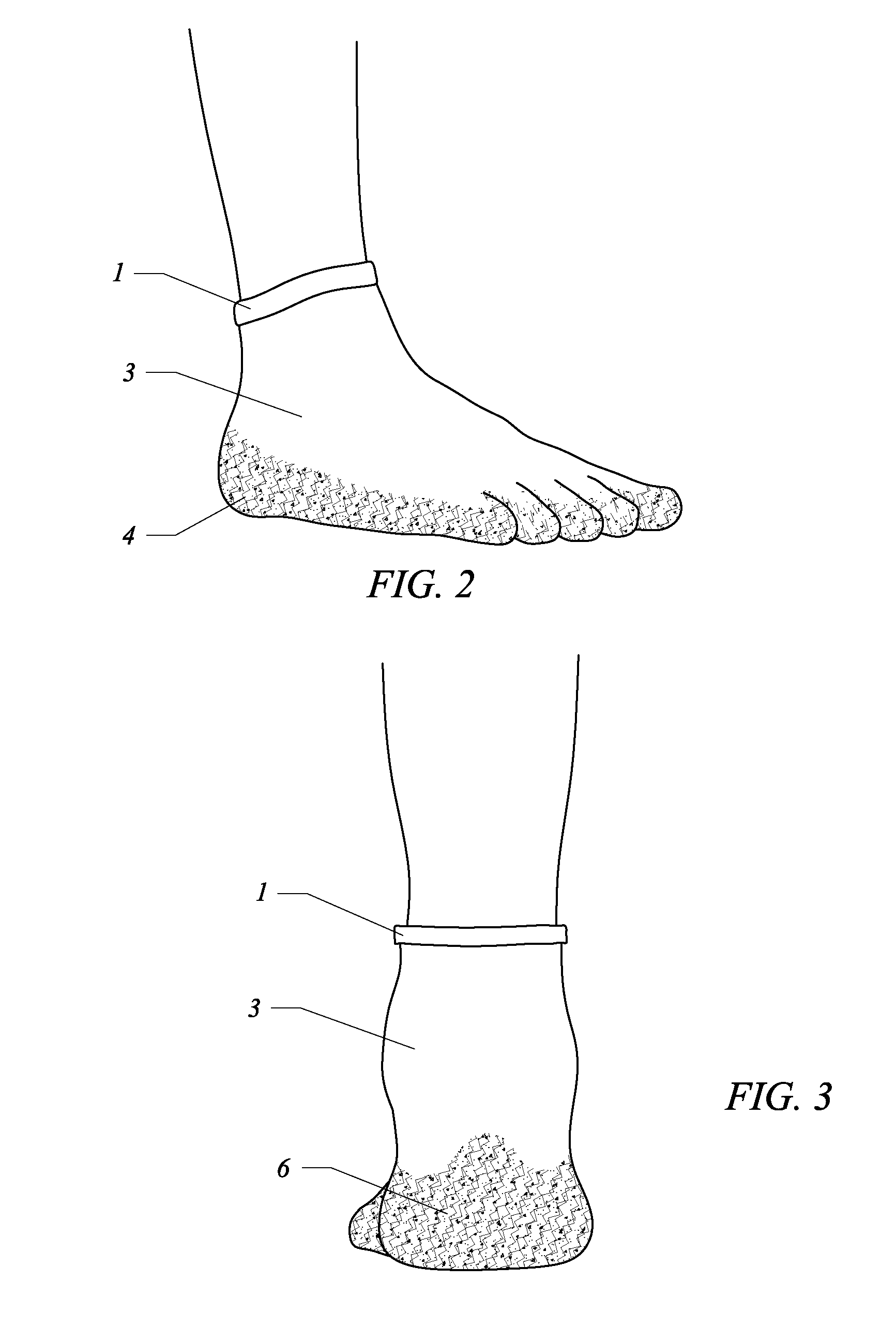Sole Coated Toe Sock
- Summary
- Abstract
- Description
- Claims
- Application Information
AI Technical Summary
Benefits of technology
Problems solved by technology
Method used
Image
Examples
Embodiment Construction
taken together with the drawings.
F. BRIEF DESCRIPTION OF THE DRAWINGS
[0028]FIG. 1 is a perspective view of the invention.
[0029]FIG. 2 is a side view of the invention.
[0030]FIG. 3 is a rear view of the heel area of the invention.
[0031]FIG. 4 is a top view of the invention.
[0032]FIG. 5 is a bottom exterior view of the invention.
[0033]FIG. 6 is a cross sectional view of the invention.
G. DETAILED DESCRIPTION OF INVENTION
[0034]Referring to FIG. 1, a sectional view of the invention is shown that includes a sock material 3 that may be formed in whole or part of any suitable material, such as nylon, polypropylene, and others. This sock material 3 will be in direct contact with the skin of the user. In one embodiment, the sock material 3 comprises polyester, acrylic, and / or nylon, as these materials have moisture wicking properties suitable for athletic activities. A shaft support section 1 is shown directly above and encircling the ankle that contains an additional amount of elastic to main...
PUM
| Property | Measurement | Unit |
|---|---|---|
| Thickness | aaaaa | aaaaa |
| Thickness | aaaaa | aaaaa |
Abstract
Description
Claims
Application Information
 Login to View More
Login to View More - R&D
- Intellectual Property
- Life Sciences
- Materials
- Tech Scout
- Unparalleled Data Quality
- Higher Quality Content
- 60% Fewer Hallucinations
Browse by: Latest US Patents, China's latest patents, Technical Efficacy Thesaurus, Application Domain, Technology Topic, Popular Technical Reports.
© 2025 PatSnap. All rights reserved.Legal|Privacy policy|Modern Slavery Act Transparency Statement|Sitemap|About US| Contact US: help@patsnap.com



